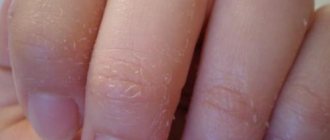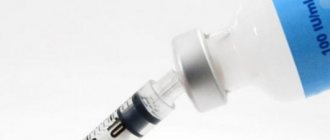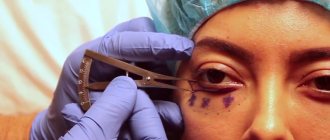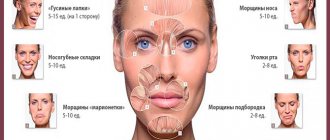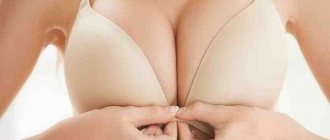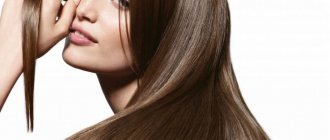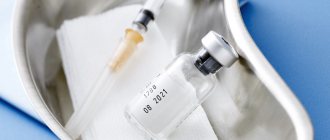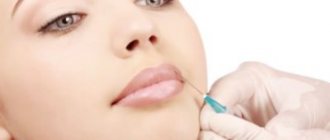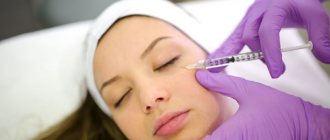The Botox procedure for hair is an effective and common technique that allows you to straighten your curls, restoring their natural health. However, due to the fact that the essence of the procedure is to apply a reconstructive composition to the strands, the result quickly subsides, which raises the question of how often hair Botox can be done. The client’s safety and the effectiveness of the service depend on this.
It is important to take this factor into account in advance so as not to deteriorate the health of natural curls, improving their structure and visual condition.
How often can I do it?
Botox is a safe procedure, as it involves the use of special compounds that are applied and fixed to the length of the vegetation, including the root system. The procedure has, in addition to a cosmetic effect, a therapeutic effect - upon penetration into the hair follicles, the solutions contribute to their nutrition, which restores the health of the hairs.
However, cosmetologists prescribe some recommendations on how often hair Botox should be done, because doing it too often can lead to the opposite result - deterioration in hair quality.
The procedure has two methods - hot and cold, which depends on the presence or absence of heat treatment of the curls during the session. However, regardless of the method, the girl is prescribed a course of cosmetology sessions to achieve the result she needs. This is due to the gentle and safe effect of the drugs on the hair structure.
Most often, about 4 visits to the center are scheduled, the interval between which is 2-3 weeks. If we talk about how long the Botox procedure for hair takes, one visit lasts about 2-3 hours, which depends on the method of providing the service (hot or cold).
The possibility of repeated manipulations in the course depends on the initial condition of the hair and other factors:
- Dyed hair – after 3-4 weeks;
- Dry, brittle, damaged – after 3 weeks;
- If side effects appear after the session (itching, irritation, allergies) – a month later;
- Age up to 40 years – 2 weeks, after 40 years – 3 weeks;
- Oily curls – 2 weeks.
How often you need to do Botox for hair is chosen individually and prescribed by a specialist after the first session.
The result of the technique usually lasts up to 5-6 months, but after 40-60 days it gradually begins to wash off, which is reflected in the fact that the curls cease to be straight, begin to become electrified, and their structure changes.
After completing one course, you need to wait time to consolidate the result, restore hair follicles and fully absorb nutrients. After this, when the result begins to deteriorate, you can do Botox again. It is recommended to do this no earlier than two months after the service was provided the previous time.
It is not recommended to do the technology too often, as this deprives the hairs of the ability to spontaneously produce microelements and preserve them in the structure of the hair follicles. Because of this, there is a risk of damage to the natural health of the vegetation, so girls have to rehabilitate it using artificial methods.
Possible consequences of providing the service too often:
- Thinning hair, fragility, increased dryness.
- Premature oiliness is the improper functioning of the sebaceous glands.
- Too small percentage of hair loss during the effect of the procedure. Because of this, after the Botox results have subsided, they may fall out in abnormally large quantities.
- Oversaturation of hair follicles with vitamins, which can cause an allergic reaction in the body.
- Itching, irritation of sensitive scalp.
Consider the possible consequences of frequent procedures to prevent their formation. To do this, follow the recommendations of the specialist, as they are prescribed individually, based on the natural state of your hair.
When to start injecting Botox?
Previously, botulinum therapy procedures—that’s what doctors call Botox injections—were perceived as the tricks of stars or, moreover, exclusively as entertainment for housewives from Beverly Hills. However, in recent years, Botox has become the most popular and widespread anti-aging drug. (Unfortunately, this did not help the myths surrounding this procedure disappear.)
The mirror will tell you when to start injecting Botox! 16588
One way or another, this rejuvenating procedure is characterized by a minimal degree of invasiveness and at the same time gives dramatic, pronounced results. So the question “When should I start injecting Botox?” More and more representatives of the fair sex are being asked, and their age is getting “younger”. But still, what is the correct answer? In fact, you can start injecting Botox at a very young age.
When to start injecting Botox: beauty injections are suitable for all ages
Botox is a drug approved by perhaps the most stringent regulatory body in the world, the FDA. It is a complex of botulinum bacteria toxins, which, when introduced into certain areas of the facial muscles, temporarily blocks local nerve impulses, which for a while (from 3 to 6 months) “turns off” facial expressions and seems to smooth the skin. Also, regular botulinum toxin injections help get rid of bad habits, such as wrinkling your forehead or frowning your eyebrows, which “program” the skin for deep wrinkles. Indeed, as we age, the skin loses its elasticity, as collagen in it is increasingly destroyed - therefore, constant muscle and skin contractions can form deeper wrinkles and folds.
So what time? In fact, the FDA has only approved it for anyone between the ages of 18 and 65. So, technically, Botox can be injected at any age - but only under the supervision of a doctor. Botox smoothes wrinkles by preventing muscle contraction. Historically, its first target was the glabella area. And if you start injecting Botox early enough, at the age of about 30, then you can actually prevent (slow down) the appearance of wrinkles. Don't believe me? And it's worth it! First of all, it should be recalled that botulinum therapy is a method not only for the correction of wrinkles, but also a method for their prevention. So the question is “When should I start injecting Botox?” It doesn’t sound idle even for 20-25 year olds who think ahead and take into account their heredity, type of facial aging, lifestyle and other factors that “transform” the skin not for the better. And for the purpose of prevention, you can start injecting Botox at the age of 30, or just over 20 - it depends on the individual characteristics of each girl.
Now that the practice has become less controversial and the safety of botulinum toxin has been repeatedly confirmed, more and more young and even young women are considering regular injections of Botox or Dysport as a method of preventing aging, and not as an emergency treatment that can smooth out badly wrinkled skin. And experts approve of this trend!
When to do Botox injections. And when you can’t inject Botox. 16554
In fact, the American Society of Plastic Surgeons reports that from 2000 through 2020, plastic surgeons increased the number of such procedures on patients under 30 by 64%. In general, the number of Botox injections during this time has increased by as much as 750 percent! So the “modest” figure of 64%, of course, pales in comparison to the global figure, but you should still know that botulinum toxin injections have their own indications, administration technique and other features for each age. And we should dwell on this point in more detail...
You can start getting Botox at age 20
Some experts in the field of aesthetic medicine recommend using this drug starting from the middle to the end of the third decade. According to them, this helps to more effectively prevent the appearance of wrinkles, as well as overexpression of facial muscles. This, accordingly, reduces the risk of negative effects of other aging factors - genetic, environmental, etc. To avoid frozen faces, dermatologists simply use less botulinum toxin and inject more superficially (the needle does not go deep into the skin) than in older people.
Of course, most women do not notice wrinkles on their faces this decade and not all of them are candidates for botulinum therapy. For most people, it is enough to apply cream with SPF daily to keep their skin fresh and elastic longer. However, if you plan to use Botox in the future, you should think about the formation of wrinkles on the skin in advance: perhaps you should slightly reduce the expressiveness of your facial expressions?
You can start getting Botox at age 30
During this decade, women usually begin to notice the first age-related changes. As for wrinkles themselves, they usually begin to appear in the form of “crow’s feet” around the eyes or fine lines between the eyebrows.
At this age, botulinum toxin will soften these first signs of aging and even help “erase” many of the fine lines. The main thing is to maintain a regular injection regimen (every three months or every six months, assessed individually by a dermatologist). In most cases, they start with a wider interval, and then the injections are administered more often.
You can start getting Botox at age 40
At this age, the skin becomes thinner, and at an increasing rate - so wrinkles appear on it more clearly (and other signs of aging become much more obvious). Most likely, if a woman has not previously resorted to botulinum therapy, then over such a long time her facial muscles have already formed several fairly clear and static wrinkles. They are aggravated by other involutional changes - loss of volume, ptosis (sagging), which are characteristic of almost everyone at this age.
That short digression: facial lines can be divided into two categories - dynamic and static. Dynamic lines are formed when the underlying muscle contracts, indicating emotions such as anger or fear. Static facial lines can appear due to the frequent formation of dynamic facial lines and develop without muscle contraction. When dynamic and static lines appear frequently and stronger than required to express emotions, they are considered hyperfunctional. Over time, the skin loses collagen and hyperfunctional lines develop into wrinkles. Botox is used to minimize or eliminate such hyperfunctional lines.
When is it too late to start getting Botox? 16590
Unfortunately, in most cases, if you start injecting Botox too late, it will no longer be able to eliminate all the deep involutional changes: they are literally “imprinted” in the skin. Although, of course, the injections will soften the severity of static wrinkles, plus they will remove dynamic ones - that is, those that form only in the process of facial expressions. So if you start injecting Botox at the age of 40, your facial skin will not become perfectly smooth, but the rejuvenating effect will nevertheless appear.
At what age can you have hair Botox?
At the first session, the cosmetologist prescribes restrictions due to the client’s health and makes sure that they are absent, which ensures safe hair Botox.
Despite the absolute safety and painlessness of the procedure, it is recommended to perform it only from the age of 16, since the use of a composition based on keratin, intra-silane and essential oils can lead to a hormonal surge in a teenager. To completely protect the client during the session, the master cannot perform the procedure before the age of 16.
However, there is another opinion about the age at which hair Botox can be done for girls - some experts believe that the minimum age for providing the service is 18 years old, which is due to normal hair regeneration before adulthood. There is truth in this too, since if you do not spoil the curls with additional cosmetic technologies, coloring, highlighting, lightening, they retain their natural state, which does not need to be maintained.
The undesirability of providing services in adolescence is explained by the risk of:
- Damage to the condition of the hair follicle, which continues to form at an early age;
- The formation of a reverse effect associated with the unstable state of the girl’s hormonal levels;
- Reduction and deterioration of natural processes in the root system of vegetation;
- Deterioration of the natural structure of vegetation. For example, if a girl’s genetics is predisposed to a gradual change in the condition of hairs with age, this process may be disrupted due to technology.
Despite the fact that the technology is considered safe and involves external and internal restoration of hairs with a healing composition, it can lead to side effects, which is why you should treat it carefully.
Additionally, regardless of age, the master prescribes general recommendations and restrictions for visiting the salon for health reasons.
There are not many restrictions prescribed, so they must be observed:
- Pregnancy and lactation period.
- Neuralgic diseases.
- Dermatological problems, lesions of the scalp surface.
- An allergic reaction to the components included in the reconstructive foundation used in the salon.
To make sure there is no allergic reaction to the drug, you can take a test at the cosmetology clinic itself if you apply it to a small area of sensitive skin.
It is important to carefully consider all the contraindications that the master prescribes, since failure to comply with them often leads to the opposite effect of the technique - the curls become dull, brittle, begin to become electrified and frizzy.
Operating principle
The main active ingredient in preparations based on botulinum toxin is neurotoxin type A. Once it enters the body, it begins to interact with nerve cells, causing neurons to stop producing acetylcholine.
In the absence of neurotransmitters, signals from the brain do not reach the muscles, and they lose the ability to contract. Over time, new processes appear in neurons blocked by the toxin and begin to produce acetylcholine again. Gradually, the artificially destroyed connections are restored, and the muscles regain mobility. Therefore, the results after the introduction of Botox last no more than 12 months, but on average 6-8.
General contraindications
There are quite numerous contraindications to the procedure. It is only at first glance that it seems completely safe. However, a harmful toxin enters the bloodstream and affects the functioning of the entire body.
“Beauty injections” are strictly prohibited for:
- Myasthenia. This is a congenital or acquired muscle weakness, the symptoms of which may increase significantly after the administration of Botox.
- Inflammation and skin diseases in the problem area. Their cause may be an infection, which, if the skin is damaged by a needle, is likely to spread further down the face.
- Exacerbation of chronic diseases . If there are serious disturbances in the functioning of internal organs, the disease may intensify under the influence of toxins.
- Severe forms of myopia. When Botox is injected into the area around the eyes, it can affect vision and cause dry mucous membranes. Cosmetologists recommend consulting an ophthalmologist for any eye diseases.
- Tendency to allergies. Most botulinum toxin-based drugs contain proteins; Dysport contains lactose. They can provoke severe allergies.
- Use of medications. “Beauty injections” are not combined with antibiotics, antidepressants, hormonal pills, or anticoagulants.
- Alcohol abuse. When combined with alcohol, botulinum toxin is neutralized. The administration of the drug in this case is simply useless.
- Fatty hernia on the eyelids. Swelling often occurs after botulinum toxin injection. They can cause a noticeable increase in the hernia.
- Surgical operations on the face. Botox injections after plastic surgery are allowed no earlier than 4 weeks later. With extensive intervention, this period can be extended to 3 months.
- Pregnancy and lactation. During injections, botulinum toxin enters the bloodstream. It can also pass through milk and thus harm the baby.
In addition, injections are not performed during menstruation and during active inflammatory processes in the body.
Why should you not sunbathe after injections?
When tanning, no matter under the sun's rays or under solarium lamps, two factors are exposed: heat and ultraviolet radiation.
Under the influence of heat, the vessels dilate, resulting in increased blood circulation, and botulinum toxin quickly leaves the injection site. At best, the result will simply be less pronounced or not appear at all, but there may be a temporary relaxation of muscles that were not intended to be paralyzed. A drooping eyelid or corner of the mouth are, although reversible, not very pleasant side effects. This is why cosmetologists recommend avoiding any thermal exposure (baths, saunas, hot baths, active physical activity and, of course, tanning on a sunny beach or in a solarium) after Botox. Therefore, you won’t be able to sunbathe with your face covered.
Under the influence of heat, botulinum toxin can leave the injection site, so after the procedure it is forbidden not only to sunbathe, but also to go to baths and saunas
And in the first few weeks after the procedure, thermal effects on the skin are undesirable. Accordingly, you need to postpone visiting the sauna and solarium for several weeks. The fact is that in the first weeks after the injection they can significantly speed up the elimination of the drug from the body.
Ekaterina Arkadyevna Ryabchenko, dermatologist-venereologist, cosmetologist at the St. Petersburg Center for Laser Medicine “Laser Doctor”
https://www.wh-lady.ru/solyarij-protiv-botoksa/
Exposure to ultraviolet radiation after any invasive procedures, including Botox, can have a detrimental effect on the condition of the skin, leading to:
- dehydration, dryness, peeling;
- thinning;
- slowing down the healing process of injection marks (swelling and inflammation may appear in their place);
- the appearance of age spots;
- the formation of small grooved wrinkles.
In addition, after Botox, it is recommended to refrain from solariums and saunas and avoid high temperatures. So you shouldn’t fly to the beach immediately after the injection. Botox, Xeomin and Dysport do not increase sensitivity to ultraviolet radiation. But if there are bruises at the injection site (when the needle gets into the vessel), wait until they go away before sunbathing.
Ekaterina Trukhina, cosmetologist, Ph.D., physiotherapist at the Revival clinic
https://www.glamour.ru/beauty_health/trends/kakie-byuti-procedury-stoit-sdelat-pered-otpuskom
